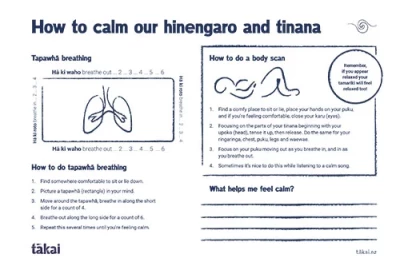
Sleep during pregnancy
Sleep can be challenging and disrupted during hapūtanga. Creating a relaxing environment, a good routine, and finding support from whānau, health professionals and other supporters will ensure māmā and pregnant people still get a good night’s sleep.
Sleep disturbances during pregnancy are very common, which is frustrating and all the more exhausting while preparing for birth, working or caring for other tamariki while feeling pretty tired throughout the day.
Side sleeping during the last trimester
Te Whatu Ora recommends side sleeping from week 28 of pregnancy to support oxygen supply for pēpi because it both increases the likelihood of a healthy birthweight and reduces the risk of stillbirth.
Settling to sleep on the side is often more comfortable, remembering either side is fine, just whichever is most comfortable. Placing a pillow between the legs can support this side sleeping position. Some people may move about during sleep, and wake up on their back. This is normal – simply move back to the side sleeping position to resettle.
Cure Kids Sleep On Side Campaign (transcript)
Miriama Kamo (Voiceover):
New research shows that sleeping on your side on the last three months of pregnancy helps prevent stillbirth.
[Song]
[Text on screen: There were two in bed… And the little one said… Roll over, rollover.]
Miriama Kamo (Voiceover):
It’s usual to change position while asleep.
The important thing to remember is to start on your side.
If you wake up on your back, just roll back onto your side.
Going to sleep on your side from 28 weeks of pregnancy means you’re helping to keep your baby healthy.
For more information, go to www.sleeponside.org.nz
Ideas to support sleep while hapū
Establish a good routine
Try to go to bed at a similar time each night, and wake at a similar time each day. This supports rhythm across the day and between awake and sleep time.
Include gentle exercise during the day to support relaxation, healthy habits and tire the body to prepare for sleep.
Create a relaxing environment
Keep the room cool, dark and quiet. Reading before bedtime, rather than using a device, supports better sleep too.
Puku (stomach) breathing, mirimiri and meditation are also useful to support relaxation.
Find support with any health concerns
Worries about health can prevent winding down for bed. Whānau workers, midwives and other health professionals can provide excellent guidance around good kai choices to ensure the body and puku are settled at night time to ease any worrying aches or birth worries.
Sometimes it can be useful to talk about overall health and wellbeing using models such as Te Whare Tapa Whā.
How Te Whare Tapa Wha supports wellbeing
Ease other stress
Talk about and find support for any other stress that isn’t supporting quality sleep. There are organisations that can provide really great support to help with financial or relationship stress.
Sometimes worries can seem heightened while pregnant. Encourage whānau to kōrero with friends, whānau and trusted kaimahi to help manage anything that feels stressful or overwhelming.
Conversation ideas
Learn more
Helpful resources for whānau
-
Sleep in pregnancy
Health Navigator
Learn about how sleep changes during pregnancy and things you can do to get the rest you need for a safe and healthy pregnancy.
-
Sleep on side
Cure Kids
A campaign providing pregnant people with information on the benefits of side sleeping to reduce the risk of stillbirth in the late stages of pregnancy.












